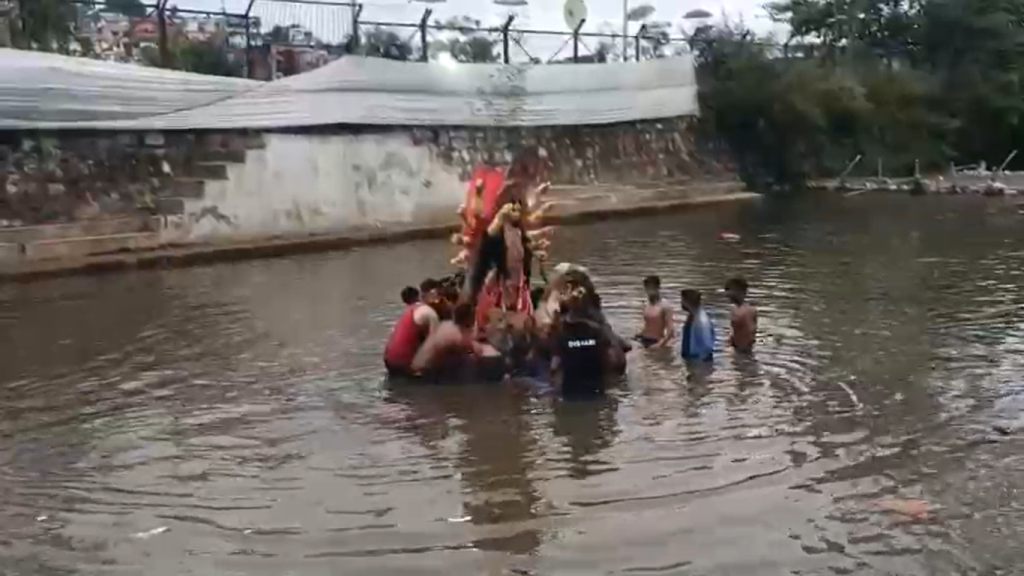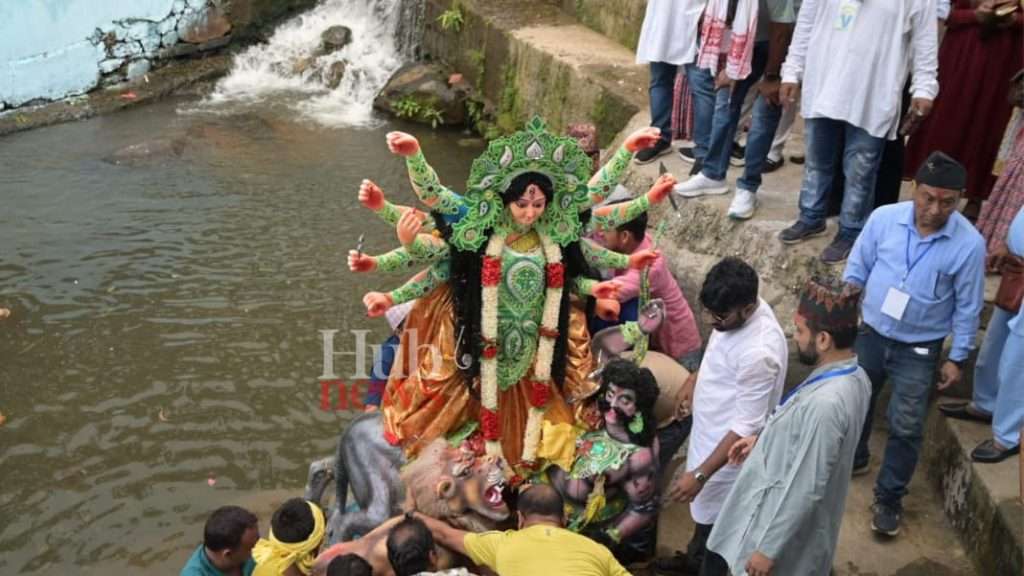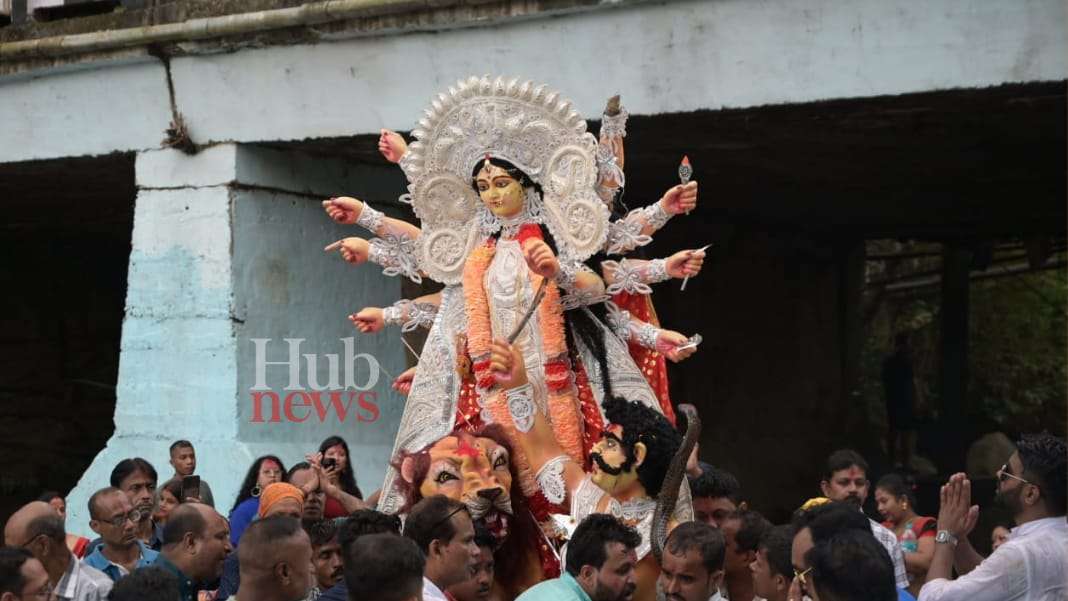Shillong, Oct 24: The festival of Dussehra, also known as Vijayadashmi, came to an emotional conclusion with much revelry across Meghalaya on Tuesday with the immersion of idols of Goddess Durga at several rivers and water spots.

In Shillong, thousands of devotees thronged the makeshift immersion point, dancing, beating drums and performed their last rituals and prayed for a prosperous year ahead in Wahumkhrah at Polo.
Once all the idols were immersed, the effigy of Ravana was burnt.

In Tura, the idols were immersed at Babupara ghat following long processions through the town.

Similarly, idols were immersed in rivers and lakes and ponds in Williamnagar, Jowai and other places throughout the State.
Vijayadasami marks the end of Durga Puja, the biggest festival of eastern India which saw thousands flocking to eye-catching marquees or pandals in the past four days.
It is the festival of Victory of Good over Evil. There are many variations to this feat that are believed all across India.
According to the Hindu scripture, the Ramayana, Lord Rama performed chandi-puja (holy prayer). This was carried out in order to invoke the blessings of Durga Maa for the killing of Ravana, the ten-headed demon king of Sri Lanka who had abducted Sita, wife of Lord Rama.
Durga Maa divulged the secret to Rama on how he could slay the great Ravana. Hence upon vanquishing the demon Ravana, Lord Rama with Sita and younger brother Laxmana, returned victorious to his kingdom of Ayodhya on the day which is called ‘Diwali’. Revelers across northern India re-enact the legend at sundown in a performance called the Ramlila, featuring actors dressed as Rama shooting flaming arrows at effigies stuffed with firecrackers.
Another version depicts the victory of Durga Mata over Mahishasura. Some of the demons, or Asuras, were very powerful and ambitious and continually tried to defeat the Devas, or Gods, and capture Heaven. One Asura, Mahishasura, in the form of a buffalo, grew very powerful and created havoc on the earth. Under his leadership, the Asuras defeated the Devas. The world was crushed under Mahishasura’s tyranny, the Devas joined their energies into Shakti, a single mass of incandescent energy, to kill Mahishasura.
A very powerful band of lightning emerged from the mouths of Brahma, Vishnu and Shiva and a young, beautiful female virgin with ten hands appeared. All the Gods gave their special weapons to her. This Shakti coalesced to form the Goddess Durga. Riding on a lion, who assisted her, Durga fought Mahishasura. The battle raged for nine days and nights. Finally on the tenth day of Ashvin Shukla paksha, Mahishasura was defeated and killed by Durga.
Hence Dussehra or Dasha-Hara is also known as Navratri or Durgotsav and is a celebration of Durga’s victory.
Durga, as Consort of Lord Shiva, represents two forms of female energy – one mild and protective and the other fierce and destructive.
Dussehra day is considered a most auspicious day. It is a time-honored belief that if any new venture is started on this day, it is bound to be successful. Hence, all the undertakings be it laying of foundation of a new building, opening of a new commercial establishment or even initiating a child into the world of learning- are started on this day. Also, on this day tools of agriculture, manufacturer’s machines, the intellectuals’ pens, the household articles, the children’s school books are placed before the idol of Durga and worshiped.
Also Read: Manipur: Man held for shooting college student in Imphal West
Also Watch





